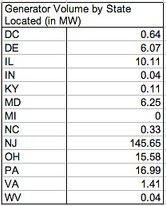MA Energy Year: January 1st – December 31st.
SREC Life: Two years for compliance buyers who may bank up to 10% of their requirement but sellers must sell SRECs in the year they are generated or deposit them in the DOER Auction. So an SREC produced in 2010 can be counted towards the 2010 or 2011 Solar Carve-Out.
When is the last SRECTrade Auction of each Energy Year?
The final SRECTrade auctions will occur in May and June of the following year, immediately before the DOER Solar Credit Clearinghouse last chance auction which closes on June 15th of each year. SRECs are generated quarterly in Massachusetts on a 4-month delay. SRECs for Q1 (January-March) are available on July 15th and can be sold in auction at the beginning of August. Q2 SRECs are available on October 15th and can be sold in the November auction, Q3 SRECs are available on January 15th and sold in the February auction and Q4 SRECs are available on April 15th and can be sold in the May auction. Any SRECs remaining after the final SRECTrade auction can be entered into the DOER auction.
What happens if at the end of the year I still haven’t sold my SREC(s)?
If you are an SRECTrade client and you have any SRECs that were not sold then SRECTrade will automatically transfer your SRECs to the DOER Solar Credit Clearinghouse auction. You do not need to tell SRECTrade to transfer your SRECs if SRECTrade manages your SREC account. SRECs entered into the auction are “Re-Minted” meaning the eligibility of the SREC is adjusted. For example, a 2010 SREC is originally eligible for compliance in 2010 and 2011. If it enters into the DOER auction, the SREC is Re-Minted to be eligible for compliance in 2011 and 2012. It is no longer eligible for compliance in 2010. Buyers may then bid to purchase the SREC to get a start on meeting their requirements for 2011. The DOER auction will be open May 16th to June 15th each year. SRECs will be sold at a gross fixed price of $300 less a 5% fee resulting in a net price of $285 to any sellers.
Am I guaranteed to sell my SRECs in the DOER Solar Credit Clearinghouse auction?
No, you are not guaranteed to sell your SRECs in the DOER auction. However, it is unlikely that the SRECs don’t sell. If there is an oversupply of SRECs in the DOER auction, the SRECs will all be granted a third year of eligibility and a second auction will be held. So, in our example, the 2010 SREC will now be eligible in 2011, 2012 and 2013. If there still aren’t enough bids to clear all of the SRECs, DOER will increase the requirements to the buyers by the number of SRECs that are available. The buyers bidding in the auction will now be required to purchase more SRECs in 2011. If after this third attempt, there still aren’t enough bids, the SRECs are returned to the owner as Re-Minted SRECs. These SRECs will be more valuable in the open market than any new SRECs that are created. Going back to our example, the original SREC was a 2010 SREC, eligible in 2010 and 2011 before the auction. Once it was entered in the DOER auction, it became eligible in 2011 and 2012. After an unsuccessful DOER auction it was released back to the owner as an SREC eligible in 2011, 2012 and 2013. This SREC now has a 3-year useful life, making it more valuable to a buyer than the new SRECs created in 2011 which only have a 2-year useful life.
If I’m unsuccessful in the DOER auction, how can I be assured that my SREC will still sell above $300?
Following the DOER last chance auction, SRECTrade will resume its monthly competitive auctions. If there was a surplus of SRECs in the DOER auction, they can be immediately listed in the SRECTrade auction the following month and made available to buyers who are now looking to meet their requirements – which have now been increased by the DOER. At this point, buyers will likely resume buying SRECs in the competitive market in order to ensure that they are able to meet their new requirement and avoid the $600 SACP. SREC prices should stay above $300 in the SRECTrade auctions since the DOER auction at the end of the year will guarantee that price.
Why would a buyer of SRECs ever pay more than $300 when they could just wait to buy their SRECs in the Solar Credit Clearinghouse?
Buyers cannot wait for the DOER auction to buy their SRECs for 2010. When an SREC enters the DOER auction, it is stripped of its 2010 eligibility and cannot be used to meet the requirement for the year in which it was generated. The 2010 SRECs placed in the DOER auction can therefore only be used to meet the 2011 or 2012 requirements. Meanwhile, buyers will want to purchase their 2010 SRECs in the competitive market prior to the DOER auction – otherwise they face the $600 fine.


